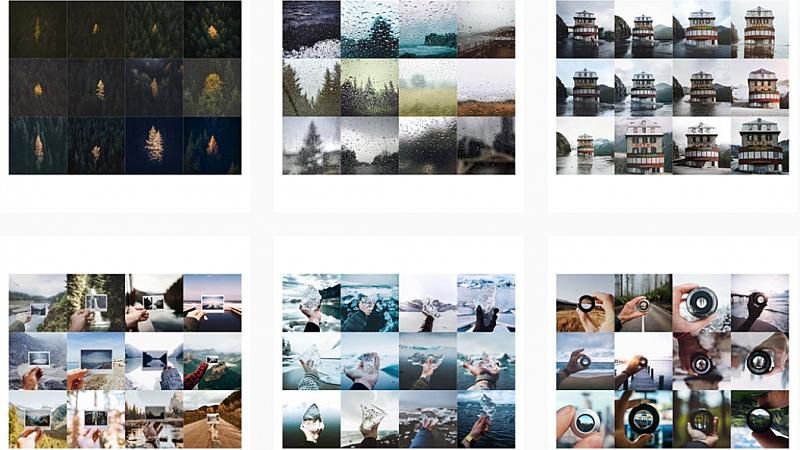
As social media giant Instagram mulls over the idea of removing public likes count, brand marketers weigh in on its repercussions. Richard Page, Senior Technology Manager and Andy Fairclough, Social Strategy Director EMEA at Reprise, explain why the removal of likes will push brands towards the metrics that matter when choosing influencers, and boost overall value.
Last month, Instagram’s CEO, Adam Mosseri, announced the global expansion of testing the removal of public like counts, a move which has been praised for its potential mental health benefits, particularly for young people.
While this has been welcomed as a step in the right direction, it has left brands and agencies wondering what the effect on the influencer industry will be.
Likes: brand value
Despite not representing any actual value, likes have acted as one of the cornerstones of identification and measurement in a field distinctly lacking in transparency.
Now featuring on most marketing plans, CMOs are questioning just exactly what the ROI is – and they are demanding a consistent approach to evaluating campaigns that complements both brand and channel performance measurement naturally.
Recent advancements can now allow brands to access influencer’s insights, allowing them to dig deeper into more actionable metrics such as shares, saves and clicks that paint a better picture of ROI.
Therefore, this announcement has had no real effect on the measurement of influencers, where it has potential to make life difficult for brands is when they’re trying to identify which influencers to work with.
This is particularly problematic for smaller brands that don’t have access to large databases of influencers who’ve provided access to their insights.
The simplest method of finding influencers has always been to decide on what size you want (looking at follower counts), and then look for those who achieve the best user engagement.
Brands and agencies with more resource and budget are able to go a step further, identifying influencers based on their audience’s demographics and interests, but engagement has always been a factor.
So how will taking likes out of the equation help to find the best influencers?
The truth is that likes have always been a false measure of influence.
The ‘Instagram Aesthetic’ has become a self-fulfilling cycle; the algorithm constantly resurfaces and prioritises selfies, flatlays, ‘food porn’ and sunsets.
When these posts are rewarded with likes more users are likely to try and recreate them in order to get their own engagement hit, leading to a rise in ubiquity where similarity is given precedence and creativity is stifled.
This cookie-cutter effect is neatly presented by the Instagram account @insta_repeat and represents an issue for the platform: boredom.
We get bored of seeing the same thing over and over again, so we learn to block it out and ignore it.
This in turn raises a more important question for brands: how will your message cut through when the influencers you use stop standing out?
Haystack Phenomenon: how to solve i
What we have now is a lot of content, and a lot of influencers that all look the same.They get likes but actually represent little value for influencer campaigns.
Trying to find influencers who are creating unique, genuine content has become your classic ‘needle in a haystack’ situation.
A solution to this problem is to turn to machine vision in order to discover the most effective influencer for your campaign.
We generated a model at Reprise programmed to recognise “The Instagram Look” – the “haystack”, and to surface all the influencers who look least like it – the “needles”.
For humans, the scale makes this impossible, but for the machine it works remarkably well; computers are fantastic at highlighting outliers (in this instance influencers who don’t match a pattern) and what’s more they can analyse the similarity of thousands of images in seconds.
Initial tests have shown this technique to surface creativity and individuality far better than Instagram’s algorithm, and we can now put these influencers forward to brands looking to work with people of real influence.
Taking the necessary steps to appraise an influencer’s audience and engagement metrics prior to working with them on an activation can only lead to increased accuracy and clearer demonstration of value at reporting stage.
From an influencer perspective, this transparency builds trust in the channel and highlights the real worth of their audience.
Correct ad disclosure is another key talking point for the influencer marketing channel.
With the ASA reporting that only 26% of consumers know what an ad is currently, it’s highly likely investment in this channel will only continue to increase if brands and influencers become more transparent in declaring what is an ad.
Disclosure guidelines are ever-evolving, with the advent of new social platforms and sector-specific requirements shaping best practice.
With Instagram’s removal of likes, we hope to see a move towards uniqueness, away from homogeneity – not just from influencers, but across the platform as a whole.
This will help the influencer industry get back to its roots – to when it was at its most effective.
Before social media, the word “influence” was generally reserved for people of power who held sway over others because of some intrinsic human qualities that made them different.
Qualities such as charisma, expert knowledge, athletic skill, and outrageous fashion – among others – elevated people to stardom and influence.
These are the types of people that brands should seek to partner with to achieve genuine value and influence for their audiences.







